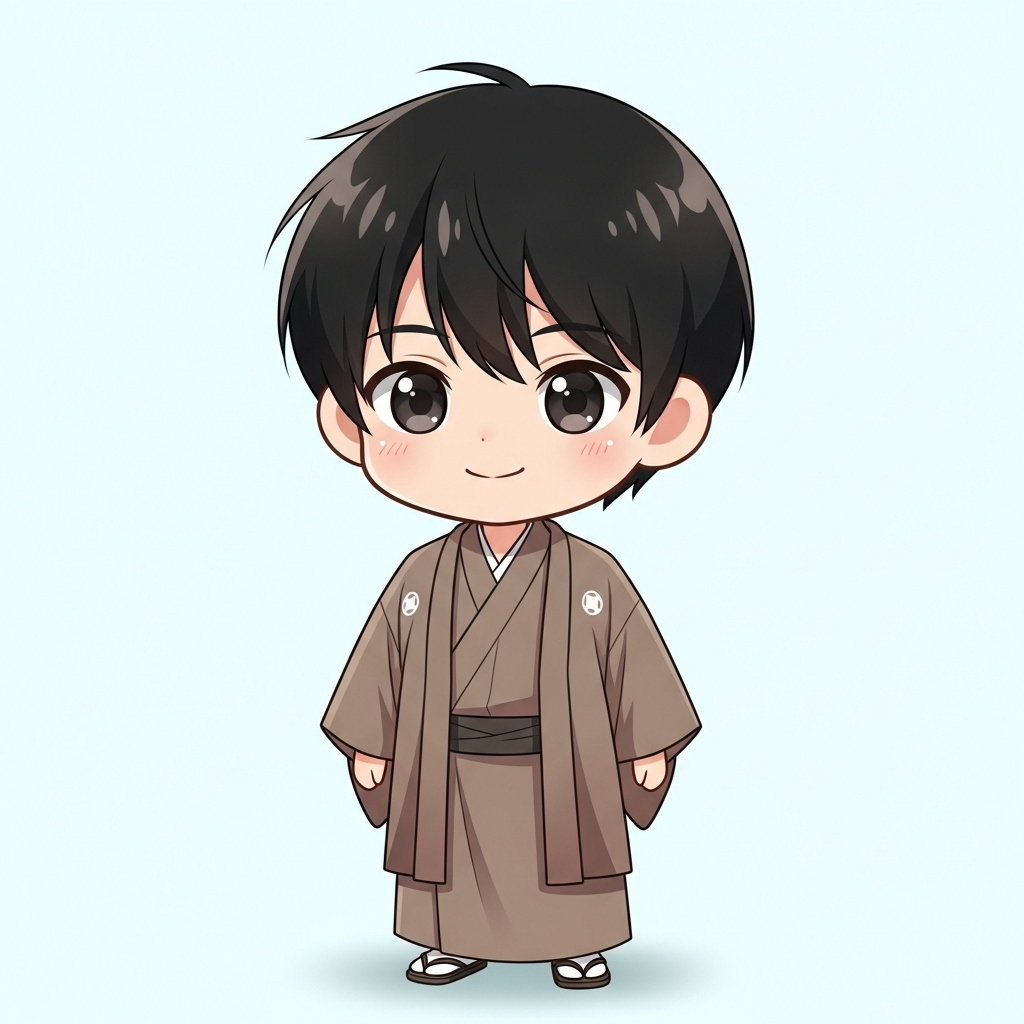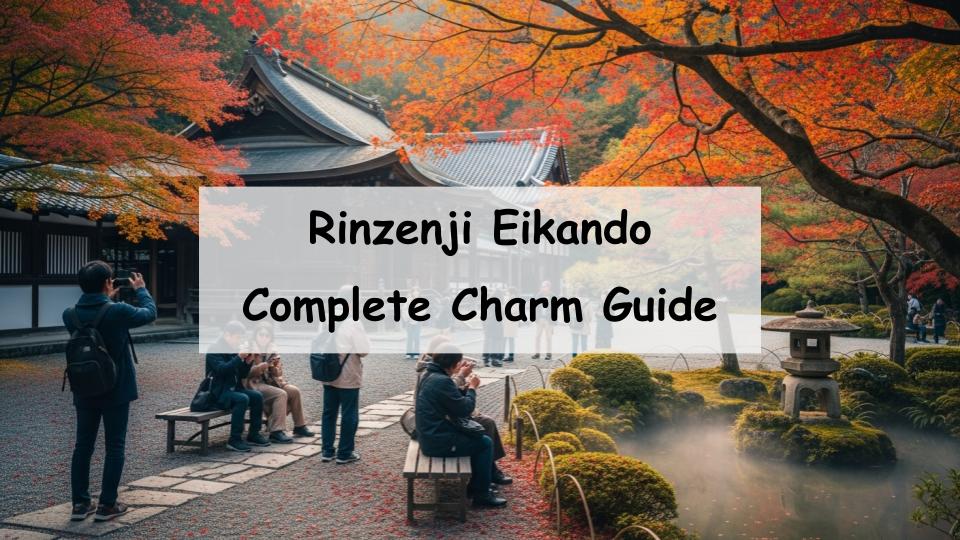Are you wondering, “What kind of temple is Zenrin-ji Eikando? What are the main attractions and how can I access it?”
Zenrin-ji Eikando is one of Kyoto’s most famous temples, renowned nationwide especially for its stunning autumn foliage. This historic temple captivates visitors with its beautiful gardens, unique Buddhist statues, and the ever-changing natural scenery throughout the seasons.
In this article, we will explore the history and characteristics of Zenrin-ji Eikando, introduce its must-see spots and the best time to enjoy its famous autumn leaves, and provide detailed access information. Even first-time visitors can feel confident and prepared for a fulfilling visit.
What is Zenrin-ji Eikando? History and Basic Information
The Founding and Historical Background of Zenrin-ji Eikando
Zenrin-ji Eikando was founded in the early Heian period and has a long and rich history. Its official name is Zenrin-ji, but it is commonly known as Eikando. Over centuries, the temple has undergone multiple restorations and expansions, resulting in the grand and elegant structure seen today. Its cultural heritage and traditional architecture represent the beauty of Kyoto’s historical temples.
Sect and Principal Object of Worship at Zenrin-ji Eikando
Eikando belongs to the Jodo sect (Pure Land Buddhism), specifically the Seizan branch of the Zenrin-ji school. The principal object of worship is the Amida Buddha statue, famously known as the “Mikaeri Amida” or “Looking Back Amida.” This unique statue is posed as if turning its head backward, creating a warm and approachable impression for visitors.
The Origin of the Nickname “Momiji no Eikando” (Eikando of Maple Leaves)
Eikando is affectionately called “Momiji no Eikando” due to its spectacular display of maple leaves in autumn. The temple grounds are dotted with numerous maple trees that burst into vibrant reds and yellows each fall, attracting visitors from all over Japan. This breathtaking autumn scenery is one of Kyoto’s most celebrated natural wonders.
Highlights and Features of Zenrin-ji Eikando
The Temple’s Appeal as a Famous Autumn Foliage Spot
The autumn colors at Eikando are a quintessential Kyoto experience. The fiery maples light up the entire temple grounds, and during the evenings, illumination events create a magical atmosphere. While the season draws large crowds, the spectacle is well worth the visit.
Important Cultural Properties and Architectural Highlights
The temple grounds include several buildings designated as Important Cultural Properties, such as the main hall and the Tahoto pagoda. These structures showcase the craftsmanship and architectural elegance of the Heian period, making them fascinating for visitors interested in history and design.
The Unique “Mikaeri Amida” Buddha Statue
The “Mikaeri Amida” statue, a defining symbol of Eikando, is notable for its unusual pose of looking over its shoulder. This artistic and spiritual icon radiates a sense of kindness and protection, standing out among Buddhist statues in Japan.
The Beauty of the Gardens Throughout the Seasons
Eikando’s gardens offer exquisite beauty year-round. From cherry blossoms in spring to lush greenery in summer, fiery leaves in autumn, and peaceful snow scenes in winter, the changing landscapes provide a serene environment perfect for reflection and relaxation.
Practical Information for Visiting Zenrin-ji Eikando
How to Get There by Train, Bus, or Car
Eikando is easily accessible by bus from central Kyoto and Kyoto Station, with frequent service and a short walk from the nearest bus stop. Those driving can use nearby parking lots, though it is recommended to use public transportation, especially during peak autumn foliage season to avoid congestion.
Opening Hours and Admission Fees
The temple is generally open from 9 a.m. to 5 p.m., though hours may vary by season. Admission is around 600 yen for adults, with discounts for students and children. During special exhibitions and illumination periods, fees and hours may differ, so it is advisable to check official sources in advance.
Crowd Levels and Best Times to Visit
Autumn is the busiest time at Eikando, with large crowds visiting to see the leaves. To avoid peak crowds, consider visiting on weekday mornings or late afternoons. Spring and winter are quieter seasons, offering a more tranquil experience.
Nearby Attractions and Dining Around Eikando
Other Famous Spots Nearby (Such as Nanzen-ji Temple)
Within walking distance are other iconic Kyoto sites like Nanzen-ji Temple and the Philosopher’s Path. Combining visits to these spots can make for a rich and comprehensive Kyoto sightseeing itinerary.
Recommended Cafes and Restaurants Near Eikando
The area around Eikando is home to numerous cafes and restaurants serving local ingredients and traditional Kyoto cuisine, perfect for a relaxing break during your temple visit.
Enjoying Kyoto’s Traditional Japanese Sweets
Kyoto’s specialty matcha and wagashi (Japanese sweets) are readily available near Eikando. Sampling these seasonal treats offers a delightful way to experience Kyoto’s culinary culture.
Frequently Asked Questions about Zenrin-ji Eikando
Is the Temple Accessible for Strollers and Wheelchairs?
While some areas of Eikando have steps and slopes, the main hall and certain paths are relatively accessible. Visitors using wheelchairs or strollers may want to consult staff for assistance to ensure a comfortable visit.
Are Pets Allowed on the Temple Grounds?
Pets are generally not allowed inside the temple grounds to help preserve the natural and cultural environment.
Tips for First-Time Visitors
For first-timers, visiting early in the day during autumn can help avoid the busiest times. Observing temple etiquette and maintaining a respectful atmosphere will enhance the experience.
A Message from the Guide

Eikando in autumn was incredibly beautiful with its stunning autumn leaves.







Comment